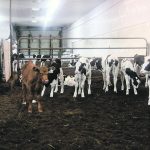Umbilical infections are a common problem many cow-calf producers will occasionally deal with in young calves. The umbilical cord connects the fetus to the placenta during gestation, allowing the movement of nutrients and water to the fetus, as well as the removal of waste products. The umbilical cord is a complex structure that encompasses two […] Read more
Tag Archives Animal Health column
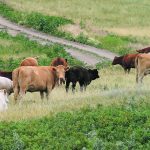
Running cattle in community pastures has pros and cons
Cattle will soon be returning from summer pastures and I believe there is huge potential for community pastures to advance cattle production by being proactive. Community pastures vary greatly in overall management and direction and most have capable pasture managers and riders to get the job done. However, it is sometimes difficult to implement changes […] Read more

Pneumonia outbreaks can affect nursing calves on pasture
Pneumonia is often considered a disease of weaned calves in the feedlot and that is the most common presentation of the disease in cattle. However, in some situations, nursing calves on pasture can be severely affected by pneumonia outbreaks. This disease is sometimes known as summer pneumonia or enzootic pneumonia. It can affect calves as […] Read more
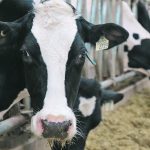
Clostridium perfringens good reason to keep up vaccines
In the cattle industry, we don’t pay much attention to the clostridium perfringens group of diseases because most producers vaccinate for it in one form or another. These diseases are covered in the multivalent clostridial (blackleg vaccines). Also, certain ones are covered in the scours vaccines so calves get protection in the colostrum and then […] Read more
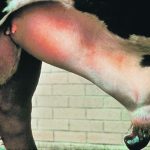
Penile hematoma is common breeding injury among bulls
It’s that time of year where most of the bulls have been turned out and are hopefully taking care of business this summer. However, a common breeding injury can interfere with the bull’s success during the breeding season. That injury is sometimes known as a “broken penis” but is probably better named a penile hematoma. […] Read more

Meat inspection plays major role in food safety system
Canada has a rigid meat inspection system to ensure that commercially sold food is safe for public consumption. A key component of this system is to prevent unhealthy animals from being sold for food. There is an entire system of slaughter facility inspection and food safety protocols that I won’t have space to touch on […] Read more
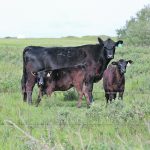
Coccidia parasites could develop resistance to toltrazuril
Coccidiosis is a common parasitic disease in western Canadian beef and dairy herds that can cause significant disease outbreaks and economic losses. The primary clinical signs are usually diarrhea, unthriftiness and poor growth rates. It can infect all farm animal species including poultry, pigs, sheep and cattle. However, the parasites that cause coccidiosis are host […] Read more
Monkeypox outbreak a symptom of ecological changes
On the heels of the COVID-19 pandemic comes another global outbreak of an infectious disease, this time monkeypox. Monkeypox is a viral disease that results in fluid-filled sores of the skin and other tissues. Scientists first detected it in captive monkeys used for laboratory research (cynomolgus monkeys, also known as the crab-eating macaque, a species […] Read more
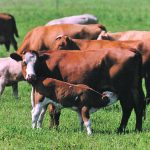
Growth implants can aid development in nursing calves
The use of growth-promotant implants in nursing calves is one of the most cost-effective strategies for improving growth and feed efficiency in the pre-weaning period. Implants have been shown to make a significant increase in weaning weights of calves in many research trials. The weaning weight improvements are often at least 15 to 30 pounds […] Read more
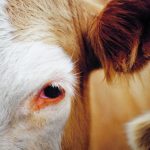
Influenza “D” virus in cattle, is it an emerging issue?
Influenza and its causes in people can be an ever-evolving process. At one time we rarely heard about influenza in cattle because there appears to be different factors in cattle serum and their immune response that causes a hindrance to the influenza virus. That is a great thing. It changed in about 2010 when reports […] Read more

